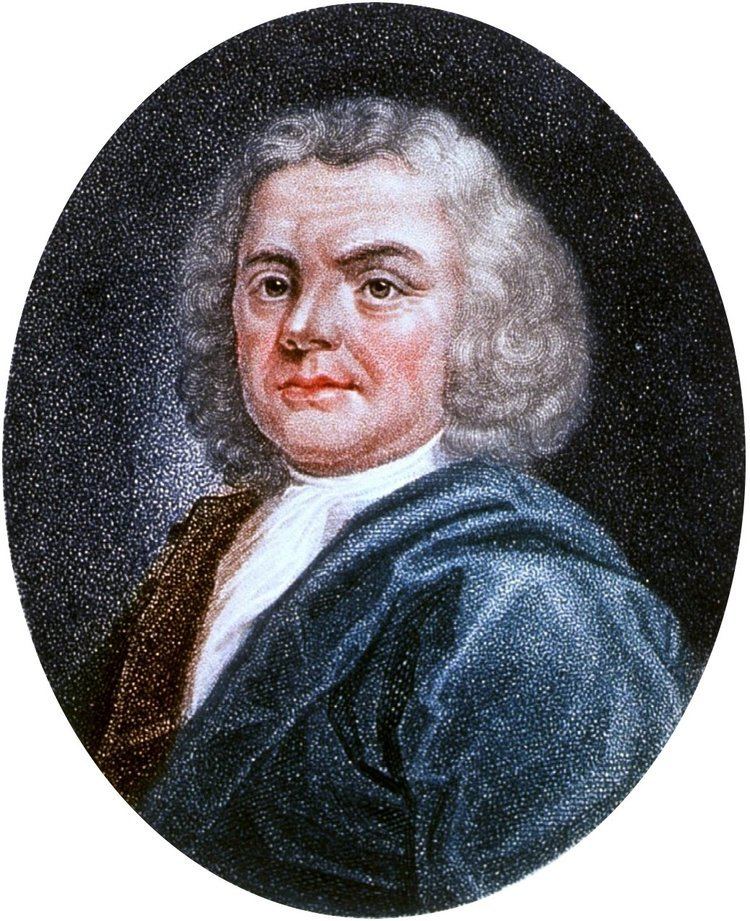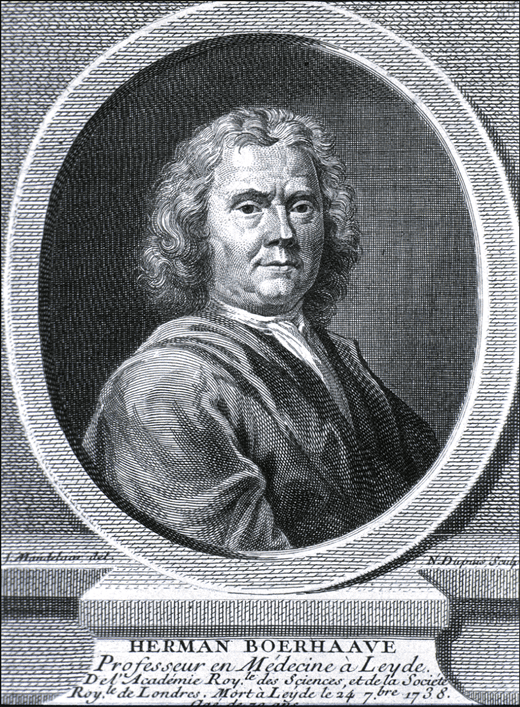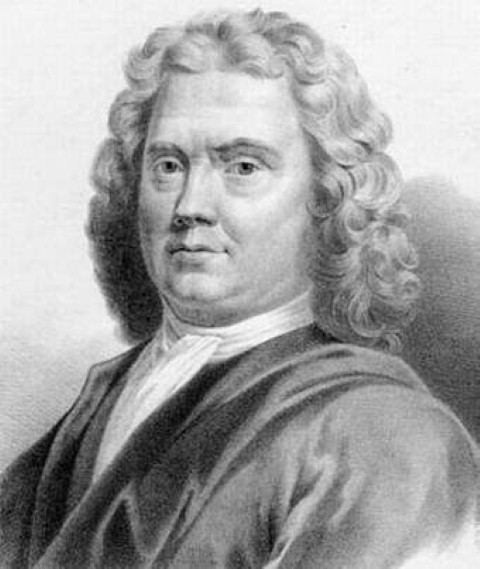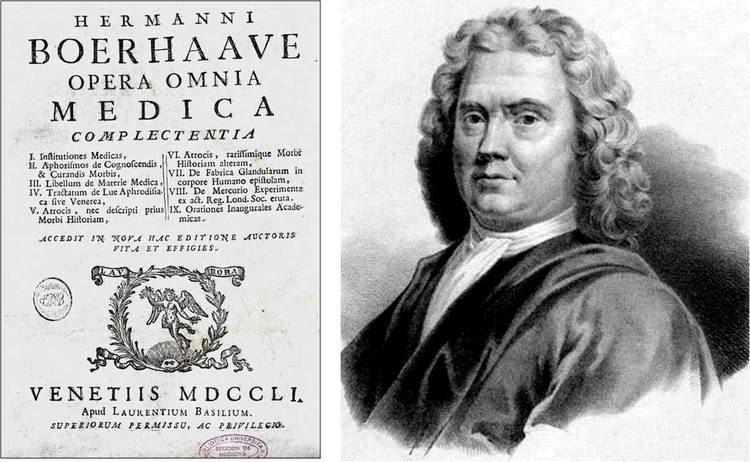Nationality Dutch Author abbrev. (botany) Role Botanist | Doctoral students Gerard Van Swieten Name Herman Boerhaave Fields Physician | |
 | ||
Known for Founder of clinical teaching Died September 23, 1738, Leiden, Netherlands Books A Treatise on the Venereal, Dr Boerhaave's Academic, Boerhaave's Aphorisms: Concerni, Elements of Chemistry, A new method of chemistry Similar People Gerard van Swieten, Albrecht von Haller, Willem 's Gravesande, Julien Offray de La Mettrie, Pieter van Musschenbroek | ||
Herman Boerhaave & de Gouden Eeuw van de wetenschap
Herman Boerhaave ([ˈɦermɑn ˈbuːrˌɦaːvə], 31 December 1668 – 23 September 1738) was a Dutch botanist, Christian humanist and physician of European fame. He is regarded as the founder of clinical teaching and of the modern academic hospital and is sometimes referred to as "the father of physiology," along with his pupil Albrecht von Haller. He is best known for demonstrating the relation of symptoms to lesions and, in addition, he was the first to isolate the chemical urea from urine. His motto was Simplex sigillum veri; Simplicity is the sign of truth.
Contents
- Herman Boerhaave de Gouden Eeuw van de wetenschap
- Herman Boerhaave Boerhaave Nascholing LUMC
- Biography
- Legacy
- Publications
- References

Herman Boerhaave - Boerhaave Nascholing - LUMC
Biography

Boerhaave was born at Voorhout near Leiden. The son of a Protestant pastor, in his youth Boerhaave studied for a divinity degree and wanted to become a preacher. After the death of his father, however, he was offered a scholarship and he entered the University of Leiden, where he took his degree in philosophy in 1689, with a dissertation De distinctione mentis a corpore (on the difference of the mind from the body). There he attacked the doctrines of Epicurus, Thomas Hobbes and Spinoza. He then turned to the study of medicine, in which he graduated in 1693 at Harderwijk in present-day Gelderland.

In 1701 he was appointed lecturer on the institutes of medicine at Leiden; in his inaugural discourse, De commendando Hippocratis studio, he recommended to his pupils that great physician as their model. In 1709 he became professor of botany and medicine, and in that capacity he did good service, not only to his own university, but also to botanical science, by his improvements and additions to the botanic garden of Leiden, and by the publication of numerous works descriptive of new species of plants.

On 14 September 1710, Boerhaave married Maria Drolenvaux, the daughter of the rich merchant, Alderman Abraham Drolenvaux. They had four children, of whom one daughter, Maria Joanna, lived to adulthood. In 1722, he began to suffer from an extreme case of gout, recovering the next year.

In 1714, when he was appointed rector of the university, he succeeded Govert Bidloo in the chair of practical medicine, and in this capacity he introduced the modern system of clinical instruction. Four years later he was appointed to the chair of chemistry as well. In 1728 he was elected into the French Academy of Sciences, and two years later into the Royal Society of London. In 1729 declining health obliged him to resign the chairs of chemistry and botany; and he died, after a lingering and painful illness, at Leiden.
Legacy
His reputation so increased the fame of the University of Leiden, especially as a school of medicine, that it became popular with visitors from every part of Europe. All the princes of Europe sent him pupils, who found in this skillful professor not only an indefatigable teacher, but an affectionate guardian. When Peter the Great went to Holland in 1716 (he was in Holland before in 1697 to instruct himself in maritime affairs), he also took lessons from Boerhaave. Voltaire traveled to see him, as did Carl Linnaeus, who became a close friend. His reputation was not confined to Europe; a Chinese mandarin sent him a letter addressed to "the illustrious Boerhaave, physician in Europe," and it reached him in due course.
The operating theatre of the University of Leiden in which he once worked as an anatomist is now at the center of a museum named after him; the Boerhaave Museum. Asteroid 8175 Boerhaave is named after Boerhaave. From 1955 to 1961 Boerhaave's image was printed on Dutch 20-guilder banknotes. The Leiden University Medical Centre organises medical trainings called Boerhaave-courses.
Boerhaave first described Boerhaave syndrome, which involves tearing of the esophagus, usually a consequence of vigorous vomiting. He notoriously described in 1724 the case of Baron Jan von Wassenaer, a Dutch admiral who died of this condition following a gluttonous feast and subsequent regurgitation. This condition was uniformly fatal prior to modern surgical techniques allowing repair of the esophagus.
Boerhaave was critical of his Dutch contemporary, Baruch Spinoza, attacking him in his dissertation in 1689. At the same time, he admired Isaac Newton and was a devout Christian who often wrote about God in his works. A collection of his religious thoughts on medicine, translated from Latin to English, has been compiled by the Sir Thomas Browne Instituut Leiden under the name Boerhaaveis Orations (meaning "Boherhaavian Prayers"). Among other things, he considered nature as God's Creation and he used to say that the poor were his best patients because God was their paymaster.
